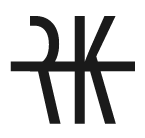Uelsmann was born in Detroit, Michigan. While attending public schools, at the age of fourteen, there sparked an interest in photography. He believed that through photography he could exist outside of himself, to live in a world captured through the lens. Despite poor grades, he managed to land a few jobs, primarily photographs of models. Eventually Uelsmann went on to earn a BA from the Rochester Institute of Technology and M.S. and M.F.A. degrees from Indiana University. Soon after, he began teaching photography at the University of Florida in 1960. In 1967, Uelsmann had his first solo exhibit at The Museum of Modern Art which opened doors for his photography career.
Uelsmann is a master printer, producing composite photographs with multiple negatives and extensive darkroom work. He uses up to a dozen enlargers at a time to produce his final images, and has a large archive of negatives that he has shot over the years. The negatives that Uelsmann uses are known to reappear within his work, acting as a focal point in one work, and background as another. Similar in technique to Rejlander, Uelsmann is a champion of the idea that the final image need not be tied to a single negative, may be composed of many. During the mid-twentieth century, when photography was still being defined, Uelsmann didn’t care about the boundaries given by the Photo Secessionists or other realists at the time, he simply wished to share with the viewer the images from his imagination and saw photomontage as the means by which to do so. Unlike Rejlander, though, he does not seek to create narratives, but rather “allegorical surrealist imagery of the unfathomable”. Uelsmann is able to subsist on grants and teaching salary, rather than commercial work.
Today, with the advent of digital cameras and image editing software, photographers are able to create a work somewhat resembling Uelsmann’s in less than a day. However, at the time Uelsmann was considered to have almost “magical skill” with his completely analog tools. At the time Uelsmann’s work first came to popular attention, photos were still widely regarded as unfalsifiable documentary evidence of events. However, Uelsmann, along with Lucas Samaras, was considered an avant garde shatterer of this popular mindset and help to expand the artistic boundaries of photography.
Despite his works’ affinity with digital techniques, Uelsmann continues to use traditional equipment. “I am sympathetic to the current digital revolution and excited by the visual options created by the computer. However, I feel my creative process remains intrinsically linked to the alchemy of the darkroom.” Today he is retired from teaching and currently lives in Gainesville, Florida with his third wife, Maggie Taylor. Uelsmann has one son, Andrew, who is a graduate student at the University of Florida. But to this day, Uelsmann still produces photos, sometimes creating more than a hundred in a single year. Out of these images, he likes to select the ten he likes the most, which is not an easy process.
Uelsmann’s photographs are not meant to depict a familiar place, but rather allow the viewer to transcend the frames and take them on a journey through the unfathomable. Through the picturesque representations of his subject matter, this becomes possible. Like the Pictorialist movement in the twentieth century, Uelsmann’s work played on big ideas, and because those ideas are so vague, the artist did not allow room for literal interpretation of his work, but rather left the interpretation to the subjective. Uelsmann believes that his work touches the viewer on a personal level and communicates his emotion better through the unimaginable settings that he creates..
Though the initial reception of his images were less than accepting, the uniqueness of his technique and composition soon became what critiques came to love in his work. During the mid-twentieth century, photographs were seen as a documentation of the concrete. Obvious conflicts would come to light when Uelsmann presented his work, merely because he chose the photographic medium as his mode of communication. The curator who asked Uelsmann to come to the Museum of Modern Art went out on a limb asking him to exhibit his work. Luckily for Jerry, the MoMA is renowned for showing the avant-garde, taking pride in helping to define modern art.
Formally, Uelsmann composes his work in black and white, with a vast complement of grays and mid-tones throughout. One of the defining characteristics of his work, however, is the stark contrasts seen throughout Uelsmann’s body of work. He contrasts the organic with the artificial in almost all of his work, and frequently includes the use of more than one focal point in his work. Placing eyes on walls, windows on trees, and shrubbery on the artificial are common elements within his work …
Jerry Uelsmann: Imagery Of The Unfathomable
LINK: www.jerryuelsmann.net
VIDEOCOMMENTSRELATED POST |
|
|
|
|


































